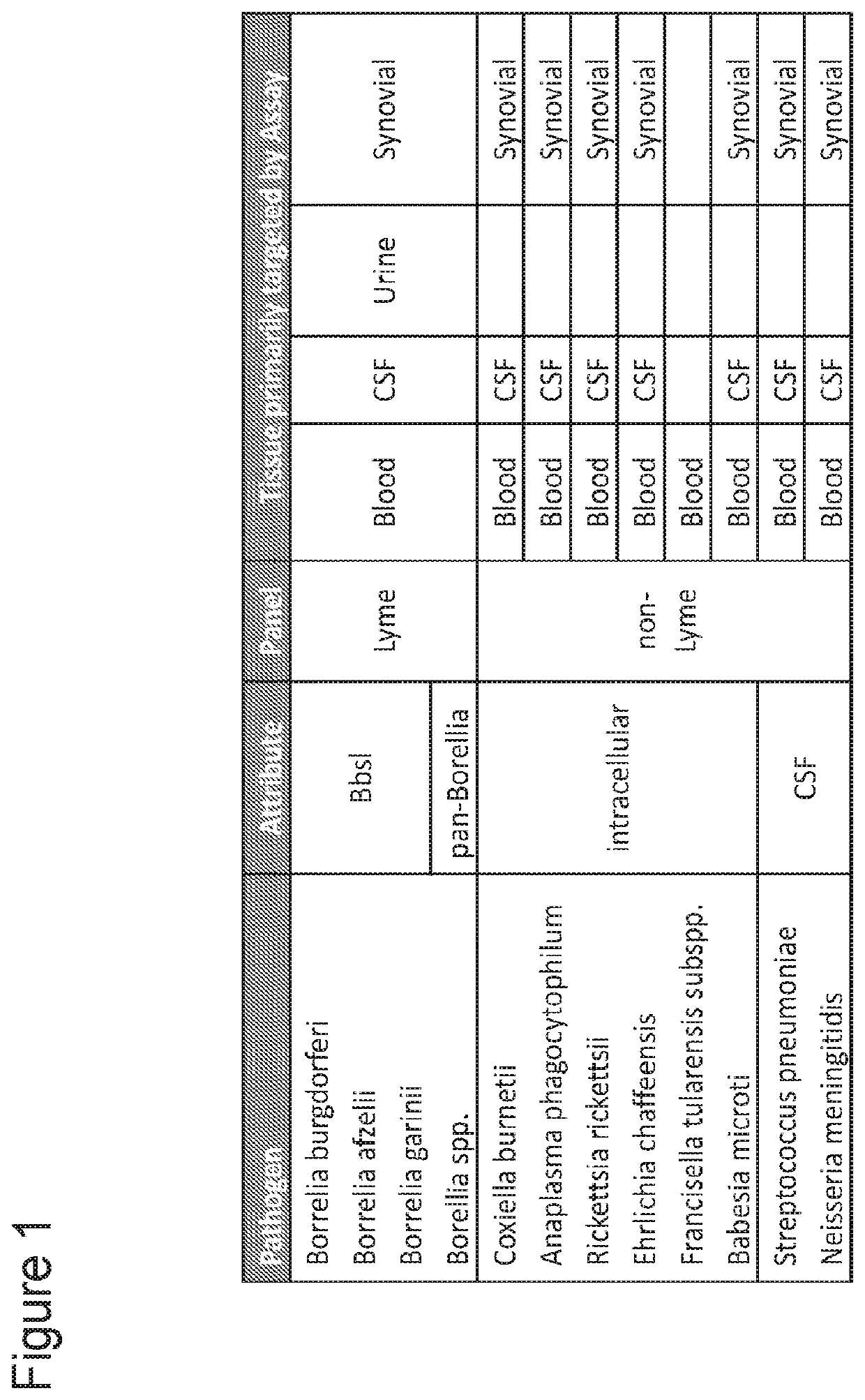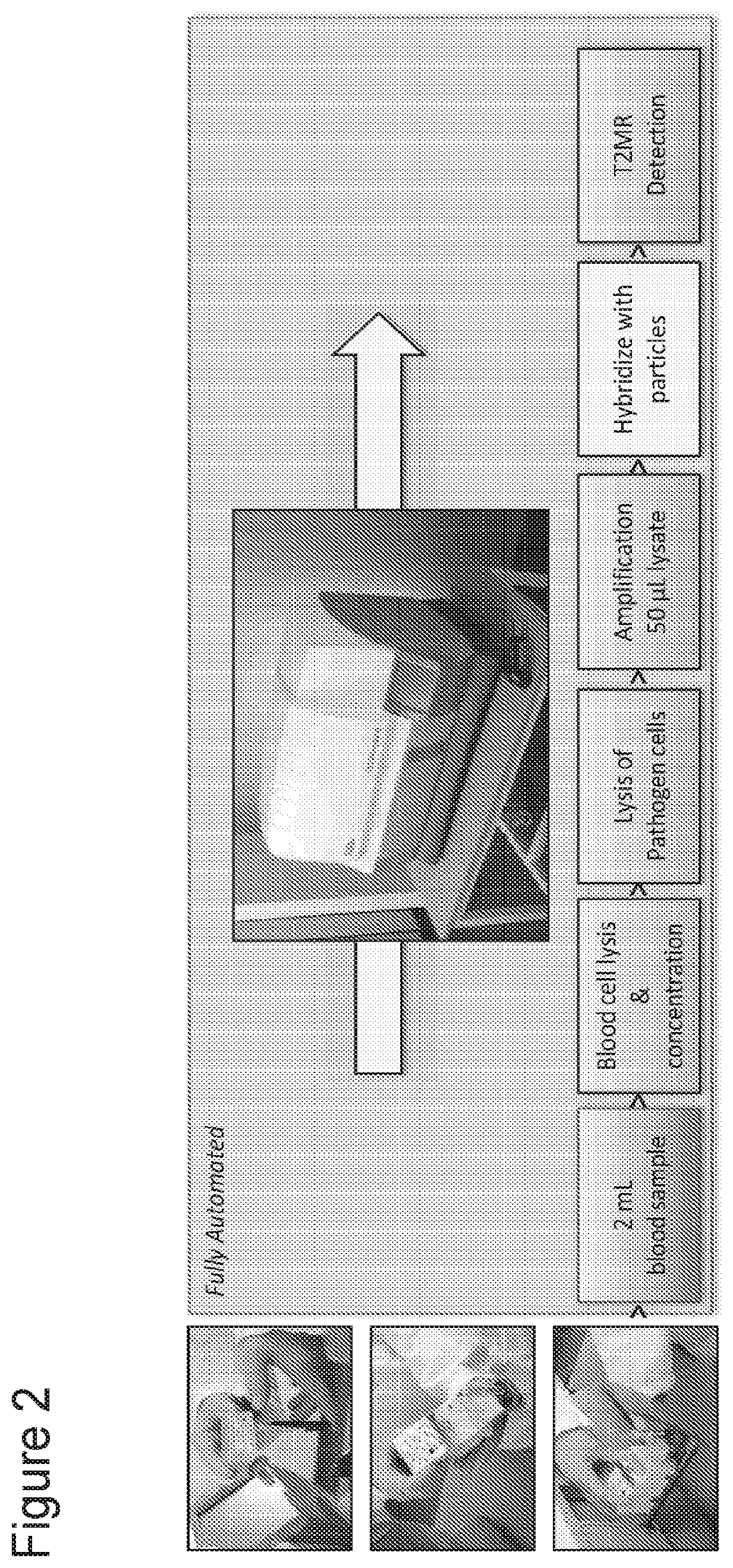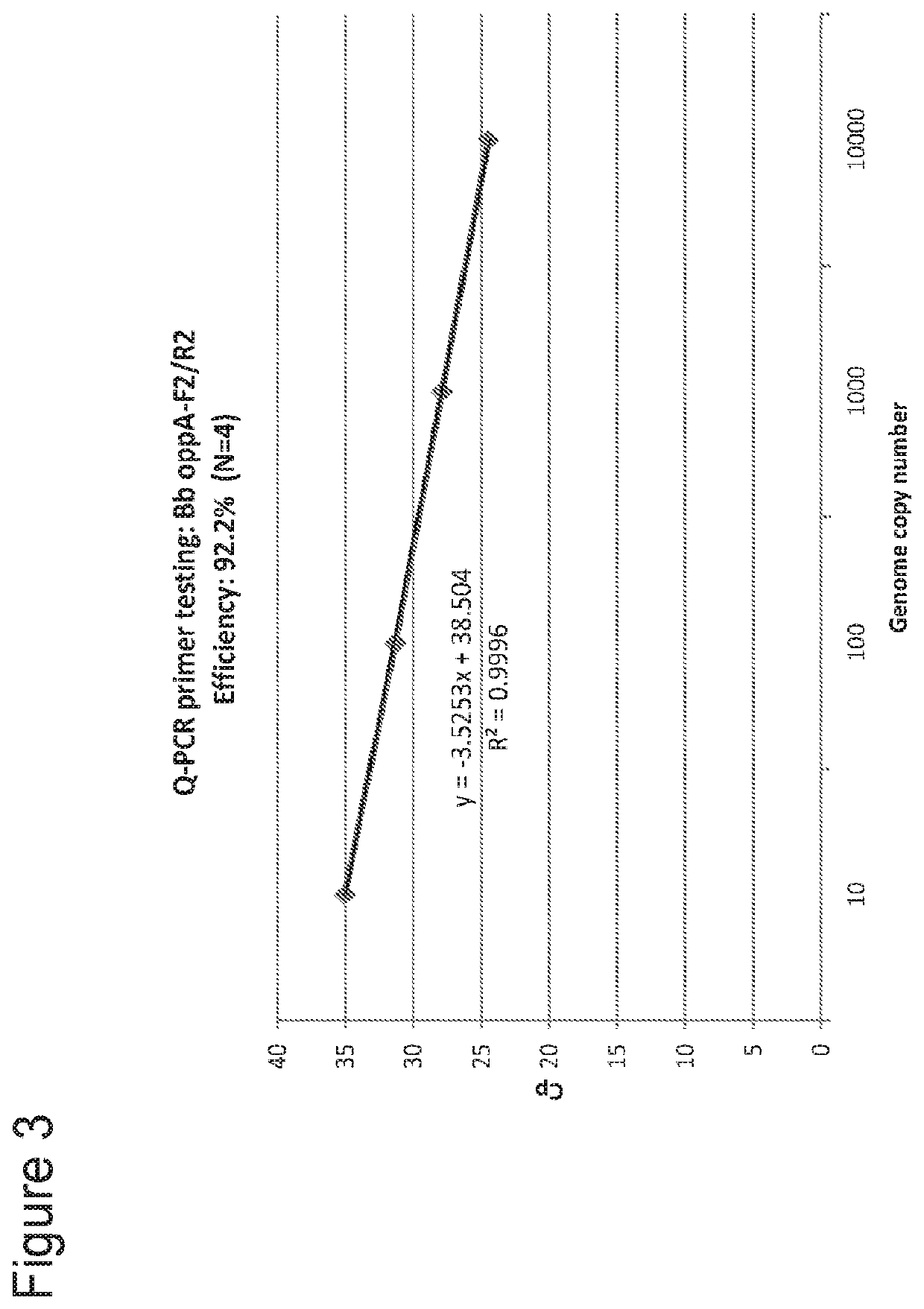Nmr methods and systems for the rapid detection of tick-borne pathogens
a technology of nmr methods and ticks, applied in the direction of instruments, biochemistry apparatus and processes, analysis using nuclear magnetic resonance, etc., can solve the problems of chronic lyme disease with recurring muscle and joint pain, untreated tick-borne diseases can have serious health consequences, and difficult to differentially diagnose tick-borne diseases
- Summary
- Abstract
- Description
- Claims
- Application Information
AI Technical Summary
Benefits of technology
Problems solved by technology
Method used
Image
Examples
example 1
on Blood Assay
[0314]One assay of the present invention is a combination assay that detects Borrelia burgdorferi sensu lato (Bbsl)-specific antibodies (IgM and IgG) and Bbsl-specific nucleic acid targets in whole blood specimens. To test a blood sample for the presence of a Bbsl species, for example during diagnosis of Lyme disease, a single blood sample drawn from the subject may be subjected to simple fractionation by high speed centrifugation. Antibodies expressed by a subject in response to Bbsl infection may be present in serum, which is the supernatant produced by the high-speed centrifugation. These antibodies can be detected by a serological test, including those known in the art, or using methods of the invention as described herein. In contrast, pathogen-specific nucleic acids, if present, will be concentrated in the pellet, which may be lysed to form a lysate for detection. The detection may involve an amplification step, such as PCR.
example 2
Comprehensive Detection of Tick-Borne Pathogens
[0315]This example describes an exemplary panel of the invention. Detection of this panel enables rapid and accurate differential diagnosis of tick-transmitted diseases, which often manifest with similar symptoms. A patient presenting with symptoms consistent with a tick-transmitted disease may be tested for the panel, which may be performed in a multiplexed assay.
[0316]The panel includes two sub-panels (see FIG. 1). The first sub-panel, termed “Lyme panel,” targets Bbsl and pan-Borrelia species, which are extracellular bacteria that are viable in blood and that can also disseminate into and establish themselves in non-blood tissues, including cerebrospinal fluid, urine, and synovial fluid. Titer levels in the different tissues, including blood, vary depending on the stage of the disease. Using the methods of the invention, this panel can be used to rapidly and sensitively diagnose Lyme disease in both the acute (stage I) and later stag...
example 3
for Detecting Tick-Borne or Other Pathogens Using the T2Dx® Instrument
[0320]The methods described herein may be performed using a T2Dx® instrument (T2 Biosystems, Lexington, Mass.). A sample obtained from a subject (e.g., a 1.7-2 mL whole blood sample from a human suspected of being infected with a tick-borne pathogen) is inserted into the device, for example, as described in WO 2012 / 054639. If the sample is a whole blood sample, the next step typically includes blood cell lysis and concentration, for instance, by (a) by mixing the whole blood sample with an erythrocyte lysis agent solution to produce disrupted red blood cells, (b) centrifuging the sample to form a supernatant and a pellet, discarding some or all of the supernatant, and optionally washing the pellet (for example, by resuspending the pellet in volume of a buffer, and centrifuging the pellet), and (c) lysing cells in the pellet (which may include white blood cells and / or pathogen cells) to form a lysate. The lysis may...
PUM
 Login to View More
Login to View More Abstract
Description
Claims
Application Information
 Login to View More
Login to View More - R&D
- Intellectual Property
- Life Sciences
- Materials
- Tech Scout
- Unparalleled Data Quality
- Higher Quality Content
- 60% Fewer Hallucinations
Browse by: Latest US Patents, China's latest patents, Technical Efficacy Thesaurus, Application Domain, Technology Topic, Popular Technical Reports.
© 2025 PatSnap. All rights reserved.Legal|Privacy policy|Modern Slavery Act Transparency Statement|Sitemap|About US| Contact US: help@patsnap.com



